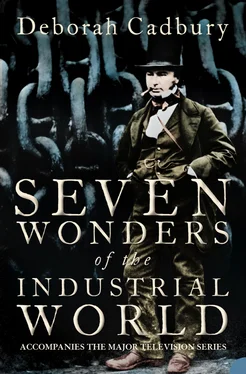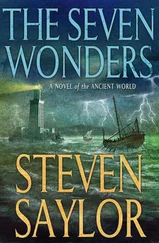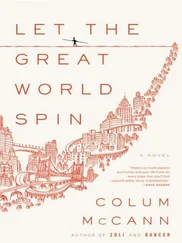Most ships docking in the Thames in the mid-nineteenth century were made of wood and built to a traditional design around a skeleton of wooden ribs giving strength to the hull. They were wind powered and usually little more than 150 feet in length. Brunel’s ‘Great Ship’, as she came to be known, was to be 692 feet long, 120 feet wide and 58 feet deep. Enormous engines as high as a house, with the power of over 8,000 galloping horses, would drive her paddle wheels and screw. In addition, an impressive 6,500 yards of sail would be carried on six masts and five funnels that were spread along her deck. The revolutionary new design of her hull, strong and streamlined, would see her cut through the seas as smoothly as a knife cuts butter and she would have the practical ability to carry all her own fuel to the furthest reaches of the empire and back. Brunel felt certain there was a need for such a ship.
To most shipbuilders of the day, Brunel’s Great Ship would have seemed an unattainable, magnificent dream, but Brunel had a way with dreams – his ‘châteaux d’Espagne’ . At twenty, he had risked his life as engineer on the first tunnel under the Thames. At twenty-four he was elected a member of the Royal Society. He went on to design five suspension bridges including the magnificent Clifton Suspension Bridge at Bristol, as well as wet and dry docks, tunnels and piers. In 1833, he became engineer-in-chief to the Great Western Railway. His trains, speeding at 50 m.p.h. past fields and villages, opened up England and joined distant cities. He surveyed and planned the route from Paddington to Bristol, designing the track, cuttings, tunnels, stations and trains – even the signal boxes and at least 125 bridges on the route west. As he built the Great Western Railway, his dreams became even grander. He imagined large steamships that would go further west, sailing out across the Atlantic to America, shrinking the world’s oceans and creating a global system of transport.
Brunel launched the Great Western in 1837, which although constructed traditionally in wood was the largest steamship ever built and faster too. In 1843, he surpassed this with his second ship, the Great Britain , which at nearly 322 feet long and 50 feet wide was the first large iron screw steamship, with a new design of hull and increased emphasis on longitudinal strength. The Great Britain was not built in the traditional rib design; instead, ten iron girders ran the length of the vessel at the base. Everything about the ship was designed for strength and she became an extremely profitable vessel on the Australia run. In 1851, with the discovery of gold in Australia, and increasing demand for passenger and mail traffic to the East, Brunel could see a commercial possibility for an even bigger ship. ‘Size in a ship is an element of speed,’ he argued, ‘and of strength and of safety and of great relative economy.’
In the spring of 1852, Brunel approached the leading naval architect of the day, John Scott Russell, to seek advice about the feasibility of his plan for the Great Ship. Scott Russell had made his name streamlining the design of ships’ hulls for maximum efficiency with his ‘wave-line theory’. Brunel admired him and respected his achievements, notably his original work on hull design. ‘With respect to the form and construction of the vessel itself,’ said Brunel, ‘nobody can, in my opinion, bring more scientific and practical knowledge to bear than Mr Scott Russell.’
Scott Russell was equally impressed with Brunel and his extraordinary idea for the Great Ship. He suggested that they present the plan for the vessel to the Eastern Steam Navigation Company. This company had recently lost the mail contract to the Far East to the Peninsular and Oriental Steam Navigation Company and were thought to be looking for a way to revive their fortunes on the route to India, China and Australia. Although a committee at the Eastern Steam Navigation Company decided in favour of the plan and appointed Brunel as engineer, the proposal caused a heated debate with some directors resigning. Indeed, Brunel soon learnt that ‘certain of the directors … opposed me personally’.
Undeterred, he threw himself into finding others interested in the project, and by the time capital for the venture was found, more than half of the new directors were nominated by Brunel. Charles Geach, MP for Coventry and chairman of the Midland Bank, was an important member of the committee and a business associate of Scott Russell to whom he supplied iron from a smelting company where he was a partner. Brunel, aware that most of the directors were of his choosing, felt ‘the heavy responsibility of having induced more than half the present directors of the company to join’. The fact was, he admitted, ‘I never embarked on any one thing to which I have so entirely devoted myself and to which I have devoted so much time, thought and labour, on the success of which I have staked so much reputation.’
By May 1853, enough shares had been sold to make a start and Scott Russell presented his estimate to the board for £377,200 to build the ship. The hull was £275,200, the screw engines were £60,000 and the paddle engines and boilers were £42,000. Since Brunel had calculated the cost of the ship as somewhere near half a million pounds, the board was delighted with Scott Russell’s price. Scott Russell had, however, seriously underestimated his costing. He wanted the commission so much that it is possible that he put in a low bid to ensure he got it, but the subsequent shortage of funds was to put the venture in jeopardy.
Soon Scott Russell faced further difficulties when, in September 1853, fire broke out in his shipyard. As the flames licked hungrily around the carpenters’ shop, the boilermakers’ shop and the timberyard, the London fire brigade ‘hurried towards the seat of the calamity … [but] unfortunately the light of the fire deceived them,’ reported The Times . They galloped at full speed down the wrong side of the river and were almost at Deptford before they realised where the fire was raging. In their rush back across London Bridge, ‘a body of the fire brigade were nearly killed as the horses galloped with the engine into a hole eight feet deep, pitching all the firemen off the machine’. It took over an hour for the fire engines to reach the scene, by which time the fire was well entrenched. By the light of day everything in Scott Russell’s yard was reduced to charred, black, smoking stumps. The damage was estimated at around £140,000 and most of the yard had not been insured.
A worrying and faintly discordant background to the ambitious project was becoming discernible. Russell’s yard was temporarily demolished and he was financially embarrassed. His yard lacked supervision, too, and with no provision for safeguarding large supplies, pilfering was rife. And, despite the fact that the Great Eastern was twice the size of any previous ship, she was to be built in a traditional shipyard with no special arrangements made for her construction. In this vaguely uneasy situation, Brunel insisted on total control.
Finally, in December 1853, all parties signed contracts for the Great Ship. Scott Russell was to build the hull and paddle engines, the celebrated James Watt and Co. would build the screw engines and Brunel was to approve all changes and drawings at every stage of the construction process. ‘I cannot act under any supervision,’ he said, ‘or form part of a system that recognises any other adviser than myself.’ Indeed, everything concerning the Great Ship was to be ‘to the entire satisfaction of the engineer’.
However, conflicts soon arose over the methods of payment. Brunel wanted to pay Scott Russell as work progressed, calculated on the amount of iron put into the ship on a monthly basis; this was the custom adopted for his railway contracts. Scott Russell, meanwhile, expected to be paid lump sums on a more regular basis so that he had sufficient cash to meet expenses. Liquidity, which had always been a problem for Scott Russell, was now made worse as some of his payment for work on the hull was in company shares, although Charles Geach helped by taking shares as payment for his iron instead of cash.
Читать дальше












